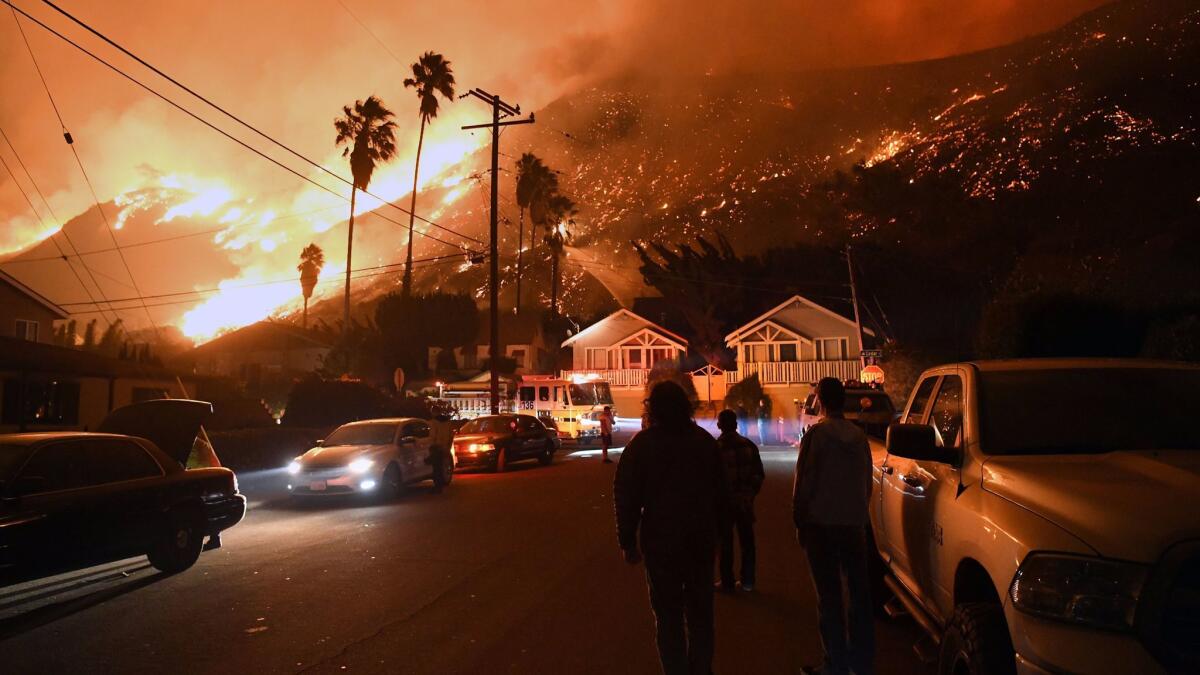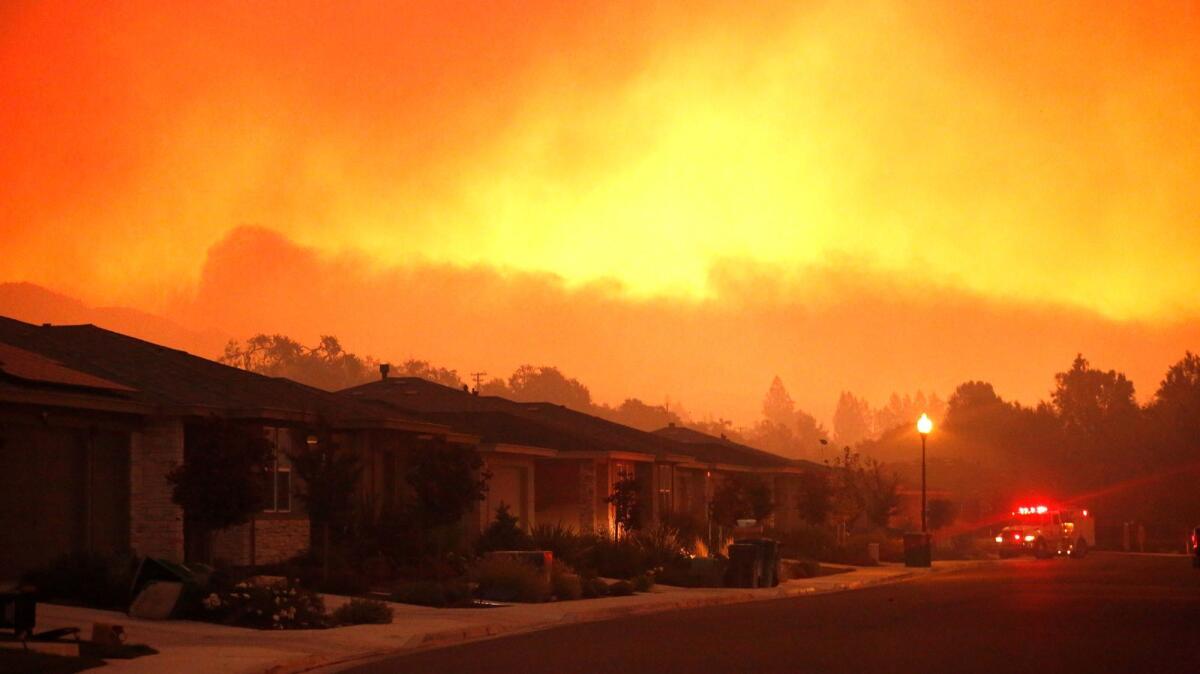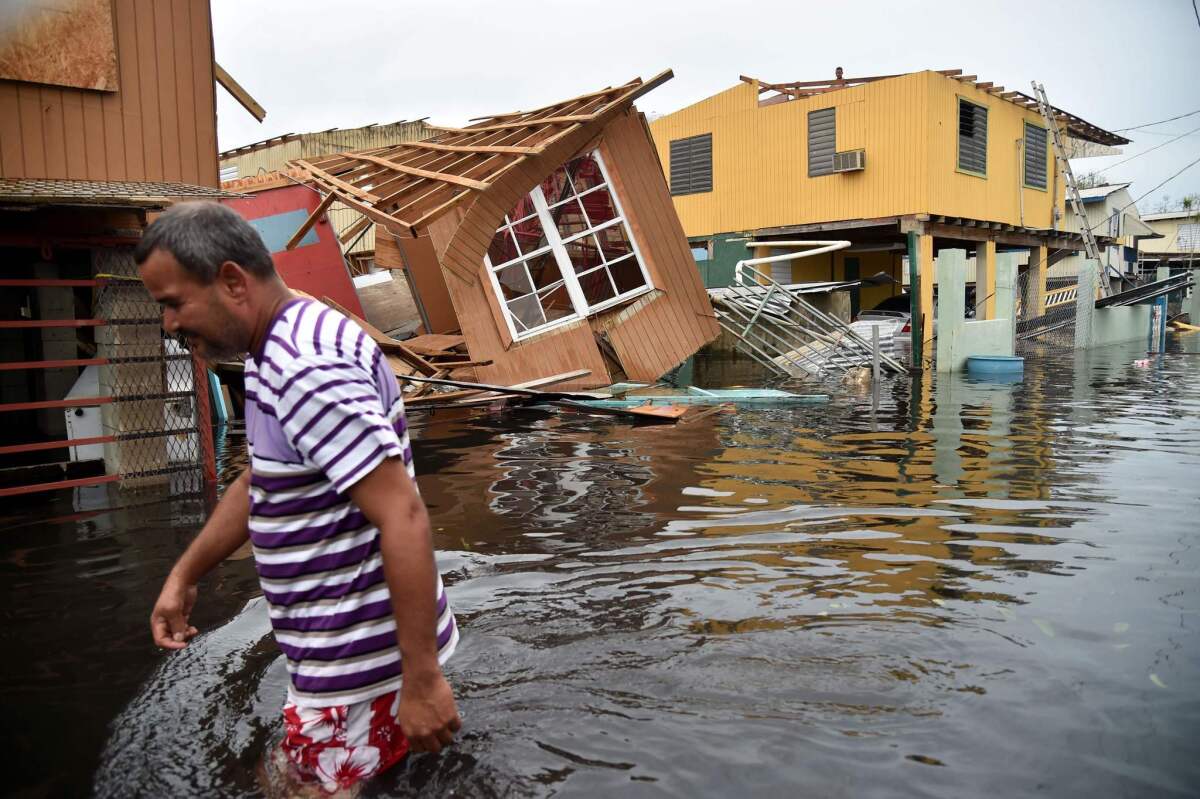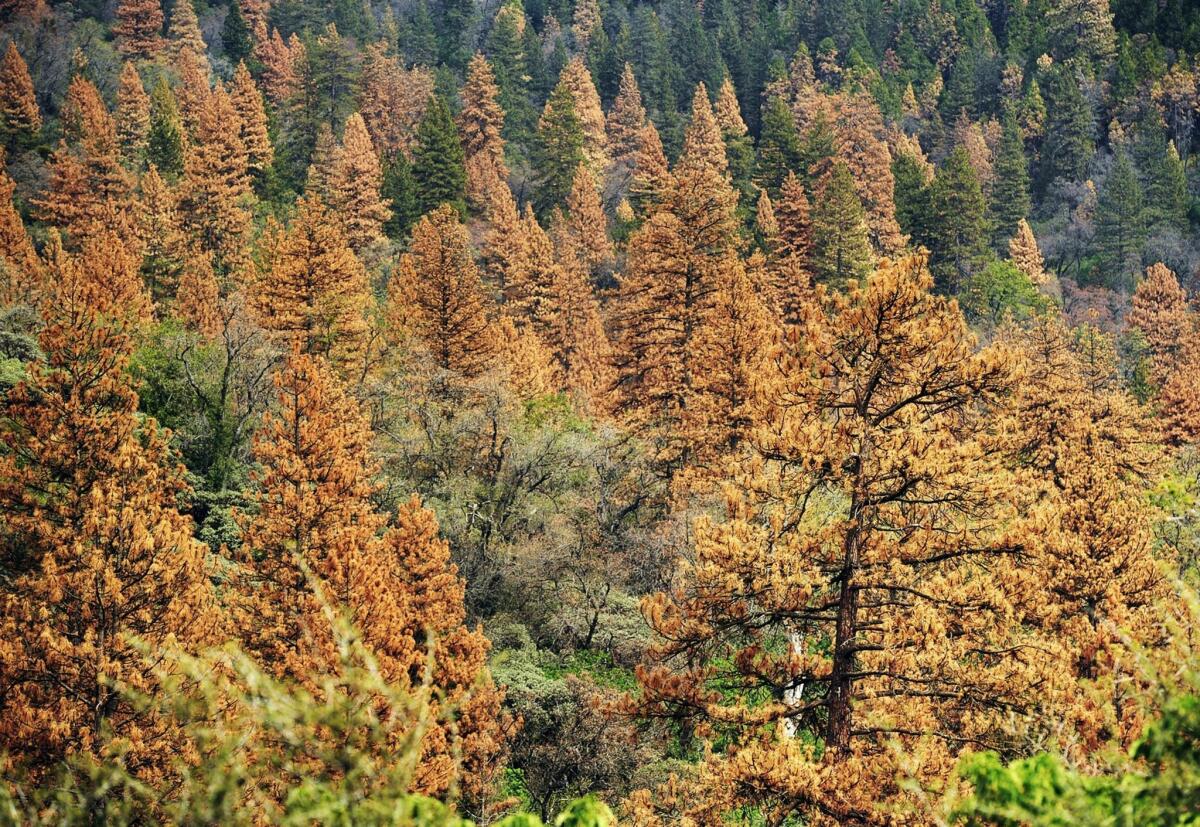Fires, droughts and hurricanes: What’s the link between climate change and natural disasters?

One of the most destructive fire seasons in California history keeps getting worse, with three wildfires driven by Santa Ana winds burning brush and homes in the Southland. At the other extreme, four hurricanes — Harvey, Irma, Maria and Nate — have made landfall in the U.S. this year, the first time in more than a decade that so many have done so.
Extreme events have been hitting the the country from all sides. To what extent does climate change influence them?
Here are a few ways researchers think that climate change’s effects could play out.
Wildfires
READY TO BLOW: Global warming means less soil moisture on average, which means that stuff burns more easily. (Particularly if you’re in a drought-stricken area with a lot of dead, dry trees, for example.)
“Fires tend to be associated with hotter drier weather, everything else being equal,” said Benjamin Bond-Lamberty, an ecosystem ecologist with the Joint Global Change Research Institute, a collaboration between the Pacific Northwest National Laboratory and the University of Maryland in College Park. That’s assuming, of course, that you have an ignition source and more tinder to burn.
ABOUT THAT TINDER: Climate change may also alter the ecosystems in ways that leave them more vulnerable to wildfire, Bond-Lamberty added. Take the mountain pine beetle. Researchers think the pine beetle used to be held in check in its natural environment thanks to frigid winters — but now, with warmer temperatures, it’s been on a rampage, killing trees through the Rocky Mountains into the Pacific Northwest and Canada. That means more dead trees — which means more stuff that’s ready to catch fire.
MOVING UP THE MOUNTAIN: As the average global temperature continues to rise, cold-loving trees like pines and spruces may need higher elevations to stay at the cooler temperatures they’re adapted to survive in. Deciduous, leafy trees may end up taking their place, and they tend to be less flammable than their coniferous brethren, Benjamin Bond-Lamberty said.

Hurricanes
SEA LEVEL RISE AND STORM SURGE: As sea levels continue to rise due to global warming, they’re increasing the risk of storm surge — the dangerously high floods caused by a storm pushing water onshore. Those floodwaters are responsible for much of the damage left by hurricanes — particularly in highly populated coastal cities.
A 2013 study in PNAS found that the risk of a Hurricane Katrina-level storm surge rose two to seven times for every 1.8-degree Fahrenheit increase in temperature.
GET READY FOR RAIN. Climate change can influence hurricanes in a number of ways — for example, in the amount of rainfall they drop. As the planet warms, the atmosphere can hold more moisture. So when it rains, it really pours.
“We think that Harvey type of rainfalls will become noticeably more frequent as the century goes on,” said Kerry Emanuel, an atmospheric scientist at MIT.
For hurricanes, that can be really dangerous, given the deaths and damage caused by rain and storm-surge flooding, Emanuel said.
“Water is the big killer in hurricanes, not wind,” Emanuel said. “Wind gets everyone’s attention, but it’s water that kills, and it’s often water that does most of the damage.”
THE HEAVY HITTERS HIT MORE OFTEN. Some research shows that the number of weaker storms, like Category 1 and Category 2 hurricanes, may go down because of climate change, and so the overall number of such storms might fall. But the strongest storms, Category 3, 4 and 5 storms, will likely become more frequent. And although the Category 1 and 2 storms make up around four-fifths of the storms that occur, it’s those rarer Category 3, 4, and 5 storms that do the most damage.
“We do think the incidence of the high-intensity events is going up, and that’s sort of what matters for society,” Emanuel said. “Those are the destructive ones.”

Drought
California is no stranger to drought. But because the multi-year weather cycles known as El Niño and La Niña tend to scramble the overall trend a little, it’s a challenge to tease out certain direct connections between droughts and climate change, scientists say. However, there are a few connections researchers can draw.
DRIER GROUND: Thanks to global warming, which is raising the Earth’s temperature, water evaporates out of the soil and into the air, sucking away moisture from plants that rely on it. This potentially helps increase drought conditions, said Lai-yung Ruby Leung, a climate modeler at the Pacific Northwest National Laboratory.
Even if total rainfall stays the same, higher temperatures will probably drive down the average moisture level in the soil, leaving less water available for living things.
RAIN-BLOCKING: On top of that, climate change might mean that subtropical high pressure systems are likely to get stronger and larger. Those systems keep moist air from traveling upward in the atmosphere, where it can condense and eventually fall to the earth as rain or snow. By gaining in size and strength, those systems may become even more effective at blocking precipitation.
“This large-scale feature … in the Pacific Ocean is one of the important factors why a lot of climate models, when they project into the future, most of them show drying in the southwestern United States,” Leung said.

Final note
As a rule, climate scientists are generally loathe to say that any particular fire, flood, drought or hurricane was caused by climate change — but they can point to the general likelihood that such extreme events might occur, or the complex ways in which they’re influenced, by climate change.
The bright side of all this extreme weather? The more that extreme events occur, the more that scientists have to study — and the better they will be able to nail those relationships down in the future.
Follow @aminawrite on Twitter for more science news and "like" Los Angeles Times Science & Health on Facebook.
MORE IN SCIENCE
What should you say to a climate change skeptic?
How NASA tracks carbon emissions from space to better understand — and deal with — climate change
Eating for your health is also better for the environment, study shows
UPDATES:
11:20 a.m., Dec. 5: This article has been updated to include three wildfires that have burned more than 45,000 acres in Southern California.
12:50 p.m., Oct. 17: This article has been updated to include Hurricanes Irma, Maria and Nate as well as the wildfires that have killed at least 41 people in Northern California.
This article was originally published on Sept. 10.




